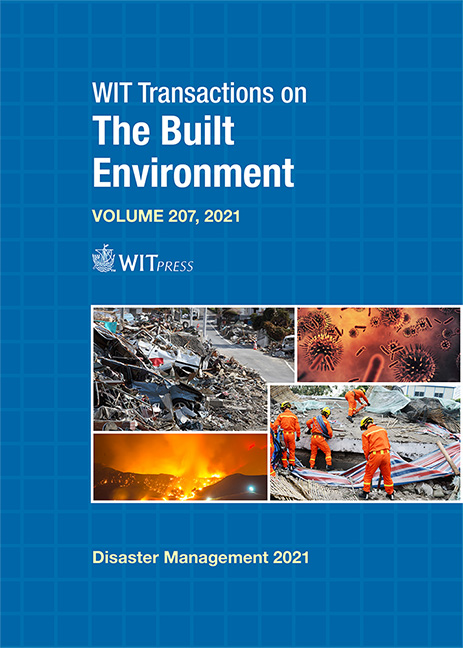INSTITUTIONS OF HIGHER EDUCATION IN COVID-19 RISK COMMUNICATIONS: TEXAS STUDY
Price
Free (open access)
Transaction
Volume
207
Pages
15
Page Range
47 - 61
Published
2022
Paper DOI
10.2495/DMAN210041
Copyright
Author(s)
ANDREA BAUER, MAGDALENA ANNA DENHAM
Abstract
This case study research aimed to explore risk communication processes and strategies adopted by Institutions of Higher Education (IHEs) in the state of Texas during COVID-19. Because higher learning and interactions with students during the initial stages of the pandemic resided predominantly in virtual space, the study design considered website content analysis as appropriate in addressing risk communications chosen by universities. Markedly, website content analysis was conducted among 43 IHEs accredited by the Southern Association of Colleges and Schools Commission on Colleges and part of a Texas University System. This sampling replicates previous IHE research in the state. The conceptual model entitled “Conceptual Model for Evaluating Emergency Risk Communication (EERC)” developed in public health was used to ground focused risk communication dimensions to (a) review whether or to what degree messaging from IHEs aligned with the components used by experts; (b) record the types of patterns that are found in messaging as well as characteristics that foster a Disaster Resilient University (DRU); and (c) provide insights on areas that may need more focus to ensure greater efficacy in the future. The ERC model yielded the following dimensions used for analysis: (a) accurate/reliable; (b) open/transparent; (c) clear; (d) tailored messages; (e) consistent/ timely; (f) sufficient; and (g) actionable. In addition to ERC, content regarding technological solutions was assessed from websites of chosen universities to gauge how universities have responded to tools needed during the pandemic to make informed judgments for the campus and to share information openly for the community. Our findings point to various components that IHEs in Texas targeted when communicating COVID-19 related information. For example, less than 60% of IHE in our sample defined terms, reviewed general COVID-19 information, and identified at risk groups on their respective campuses and only 6% provided an option for translating information. Meanwhile, IHEs fared generally better at providing timely updates regarding campus operations (i.e., 80%). Implications for our finding are discussed within the lens of Disaster Resilient University (DRU).
Keywords
institutions of higher education, Disaster Resilient University, risk communications, college students and COVID-19, public health, digital health technology, evaluating emergency risk communication




